The islands of Hawaii are known for their beautiful beaches, stunning volcanoes, and lush forests. Each island has its own culture and unique attractions. Folks move to Hawaii not just for the paradise beach life, but for sunny skies and low crime. If you’re considering moving to Hawaii, we’ve compiled a list of the six best places to call home.
1. Maui
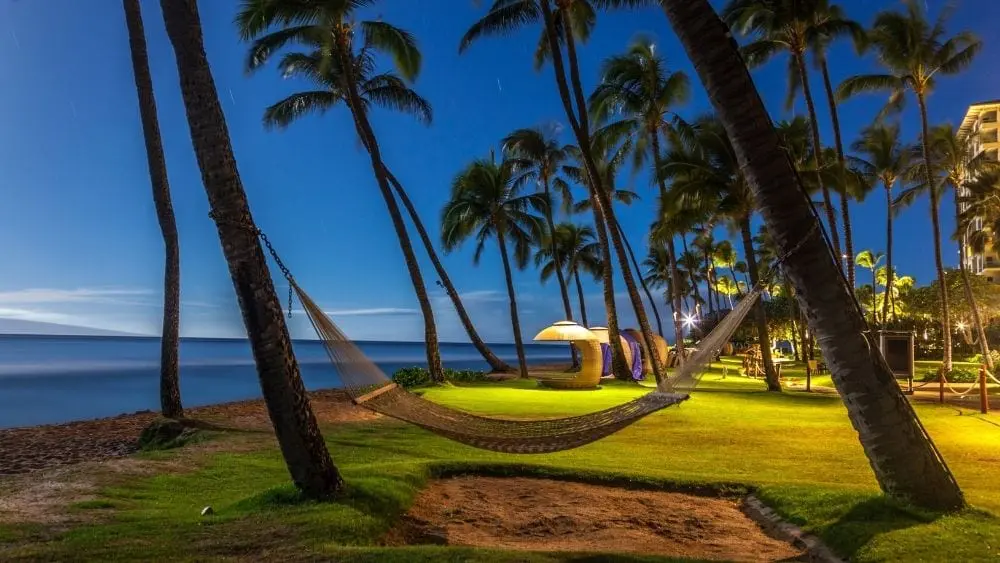
Housing cost to income ratio: 8.68%
Average childcare cost to income ratio: 0.81%
Violent crime index: 9
Nonviolent crime index: 26.6
Cost of living index: 161.9
Known for being a popular tourist destination, Maui ranks as the best place to live in Hawaii. The second-largest island in Hawaii, Maui consists of multiple towns, beautiful forests, and of course sparkling idyllic beaches. Interesting facts about Maui include its nickname “The Valley Isle” due to its central valley between two volcanic mountain ranges. It is renowned for its stunning landscapes, including the iconic Road to Hana and the breathtaking sunrise at Haleakalā. What makes Maui a wonderful place to buy a new home is its unparalleled beauty, year-round pleasant climate, and a strong sense of community.
Adventurous souls will enjoy hiking through Haleakalā National Park, which features a 10,000-foot dormant volcano. The Ko’olau Forest Reserve and the Hana Forest Reserve provide excellent opportunities to enjoy the beauty of Hawaii’s forests. For those who prefer to relax, enjoy one of the parks located along the coast including dog-friendly ones. Maui is a dog-friendly island, with several parks and beaches where dogs can enjoy the outdoors. The Keōpūolani Regional Park and the Kamaole Beach Parks are popular spots for dog owners.
Maui experiences 276 sunny days and 35 inches of rain per year, so you will have ample time to soak up the sun. Maui enjoys a tropical climate with warm temperatures year-round, making it an ideal location for outdoor activities. Residents can explore a myriad of recreational options, such as snorkeling in crystal-clear waters, hiking through lush rainforests, surfing on world-famous waves, and teeing off at championship golf courses.
Community events and festivals are an integral part of Maui’s culture. The annual Maui Film Festival, Hawaiian Slack Key Guitar Festival, and the Maui Fair celebrate art, music, and Hawaiian traditions. The Lahaina Second Friday Town Party and the Makawao Third Friday Town Party are monthly gatherings that feature local artisans, food vendors, and live entertainment.
Maui boasts a range of cultural attractions, including the Maui Arts & Cultural Center, which hosts concerts, theater performances, and art exhibitions. The Alexander & Baldwin Sugar Museum and the Bailey House Museum provide insights into the island’s history and plantation heritage.
The political climate is ultra-liberal. Education options on Maui include public and private schools. The Hawaii Department of Education oversees public schools, with Maui High School being one of the notable institutions. Private schools like Seabury Hall and Maui Preparatory Academy offer alternative choices for families seeking independent education. The University of Hawaii Maui College, located in Kahului, is known for its programs in marine science, hospitality, and agriculture. It serves as the primary institution for higher education on the island.
Tourism is a major industry in Maui, providing numerous job opportunities. Major employers include resorts and hotels like the Grand Wailea Resort, healthcare providers such as Maui Memorial Medical Center, and agricultural companies specializing in pineapple and sugar cane. Quality healthcare is provided by facilities like Maui Memorial Medical Center and Kula Hospital.
Set your sights on Maui where stunning natural beauty, rich Hawaiian culture, and a warm, welcoming community embraces you. Enjoy island life with fun recreation, cultural attractions, and strong local traditions. Paradise is awaiting its next new resident in a Maui new home. The most popular suburbs are Kula, Makawoa, and Wailuku.
2. Oahu
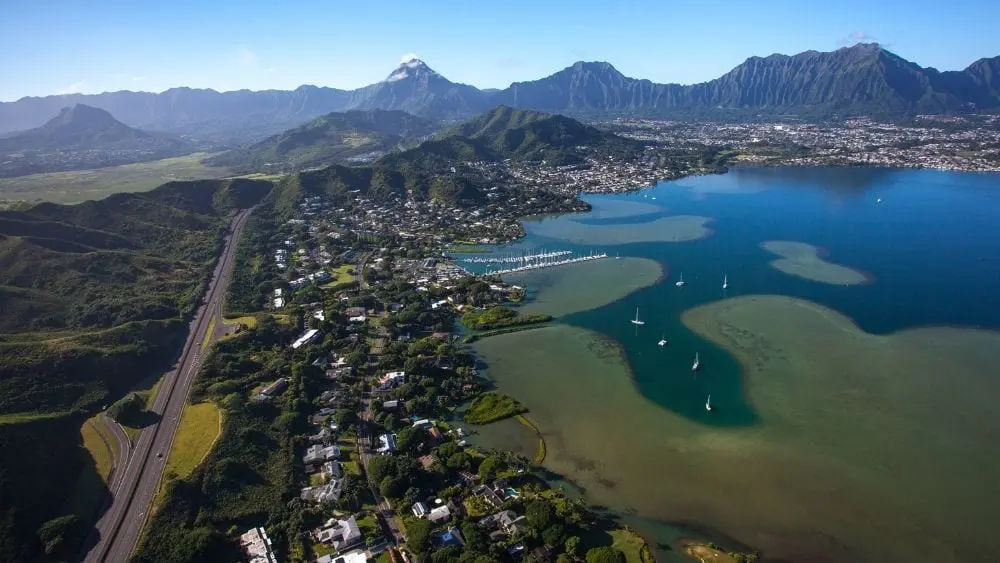
Housing cost to income ratio: 9.14%
Average childcare cost to income ratio: 0.88%
Violent crime index: 17.4
Nonviolent crime index: 43.4
Cost of living index: 176.5
Hawaii’s third largest island, Oahu is home to the state’s capital city and is an ideal place to live. Oahu is not only the most populous of the Hawaiian Islands but also the home of the state capital, Honolulu, and iconic landmarks like Waikiki Beach and Diamond Head. Oahu is known for its historical sites and events, including Pearl Harbor. The island boasts a wealth of cultural attractions, such as the Bishop Museum, Iolani Palace, and the Pearl Harbor Historic Sites, which provide a deep dive into Hawaiian history and heritage.
Oahu enjoys a tropical climate with consistently warm temperatures year-round, providing the perfect environment for outdoor activities. Spend 271 sunny days per year at the beaches where you can surf, snorkel, relax, and play to your heart’s delight. Residents can indulge in a wide range of recreational options, including world-class surfing, hiking to scenic viewpoints, and exploring lush botanical gardens.
Expansive nature reserves and forests occupy a sizable portion of the island, allowing residents to embrace Hawaii’s natural beauty. Dog owners will love that more than a dozen dog parks are scattered across the island, giving owners dedicated space to play with their pups. Popular spots for dog owners include Kaiaka Bay Beach Park and the Moanalua Dog Park.
Community events and festivals are integral to Oahu’s culture, fostering a strong sense of community. Celebrations like the Aloha Festivals, Honolulu Festival, and the moving Lantern Floating Hawaii Ceremony honor the island’s cultural heritage and traditions. The Honolulu Marathon and the Waikiki Spam Jam are just a couple of the annual events that bring the community together for fun and camaraderie.
Education options on Oahu are diverse and include both public and private schools. The Hawaii Department of Education oversees public schools, while private institutions like Punahou School and Kamehameha Schools offer enriching experiences. The University of Hawaii at Manoa, located in Honolulu, is renowned for programs in astronomy, marine biology, and tropical agriculture, serving as the primary institution for higher education in the state.
A robust job market is fueled by the tourism industry. Major employers encompass hospitality companies such as Hilton Hawaiian Village, healthcare providers like The Queen’s Medical Center, and military bases like Joint Base Pearl Harbor-Hickam. Healthcare on Oahu is well-supported, with major hospitals such as The Queen’s Medical Center and Straub Medical Center offering comprehensive medical services. Residents can rest assured they have access to high-quality healthcare.
What sets Oahu apart from other places is its unique blend of Hawaiian culture, modern amenities, and breathtaking landscapes. The island’s diverse recreational opportunities, rich cultural heritage, and strong job market create a dynamic and attractive environment for those seeking to call Oahu home. Find the perfect fit for your family in a beautiful Oahu new home community sure to capture the essence of life in Hawaii.
3. Hawaii Island
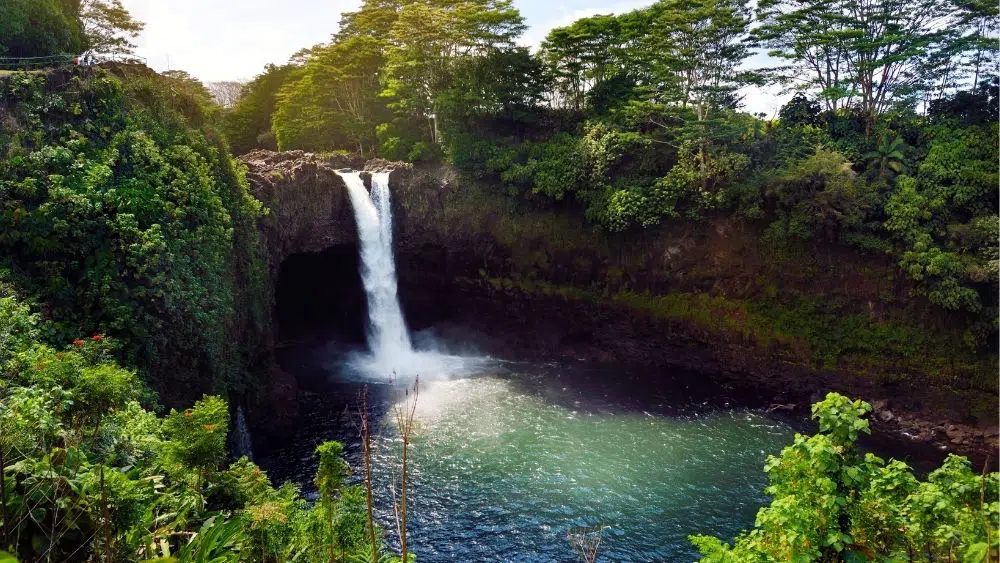
Housing cost to income ratio: 9.76%
Average childcare cost to income ratio: 0.77%
Violent crime index: 2.46
Nonviolent crime index: 23.31
Cost of living index: 170
Hawaii Island, often referred to as the Big Island, presents a vibrant tapestry of landscapes and opportunities. The largest island is known for the Hawaii Volcanoes National Park, where folks can witness lava flows, craters, and other volcanic activity. Other points of interest include the coastal forest reserves, white sandy beaches, and vibrant botanical gardens. From the fiery spectacle of Kilauea in Hawaii Volcanoes National Park to the tranquil waters of Hapuna Beach, the island caters to a diverse range of interests and lifestyles.
The Big Island is home to several museums and attractions that showcase its unique history and natural beauty. The Hawaii Volcanoes National Park is a must-visit. The Lyman Museum and Mission House in Hilo provides insights into the island’s cultural heritage, while the Imiloa Astronomy Center blends Hawaiian culture with the wonders of the universe.
Enjoy local food and drink in the cities, which lean strongly liberal politically. Whether you prefer busy resort towns or quiet villages, there is something for everyone here. The east and west coasts also contain dog parks ideal for both owners and pets. The Big Island sees upwards of 57 inches of rain per year, making it the wettest of the locations on our list. Hawaii Island’s parks are beyond compare, ranging from the black sands of Punalu’u Beach to the lush rainforests of Akaka Falls State Park. Activities unique to the island include night diving with manta rays, exploring lava tubes, and stargazing atop Mauna Kea. The island’s diverse ecosystems make it a perfect place for hiking, snorkeling, and exploring the great outdoors. Nearby state parks like Akaka Falls and Waipio Valley offer breathtaking natural beauty and outdoor adventures.
Locals enjoy a range of activities that highlight the island’s natural beauty and cultural heritage. Surfing, paddle boarding, and fishing are popular, as are hula lessons and lei making. Community events, such as the Merrie Monarch Festival, highlight Hawaii’s rich traditions. Festivals and events, including the Kona Coffee Cultural Festival and the Ironman World Championship, draw visitors from around the world.
The Big Island boasts a variety of shopping and dining options, from local markets offering fresh, organic produce to boutique shops selling unique Hawaiian crafts. Dining on the island is a culinary adventure, with options ranging from traditional Hawaiian fare to international cuisine, all highlighting the island’s rich agricultural bounty.
Hawaii Island is a burgeoning hub for innovation, especially in sectors related to astronomy, renewable energy, agriculture, tourism, and a growing tech scene. The island’s economy is also supported by research and education, particularly in astronomy and marine science, offering a range of career opportunities. Living in Hawaii allows you to enjoy the unmatched work-life balance that living in paradise offers.
Along with a thriving economy, the amenities here are top-notch. For medical care, residents have their choice between several hospitals including Hilo Medical Center. Excellent educational opportunities are available, from public and private schools offering unique environmental and cultural curricula to immersive programs that celebrate the rich Hawaiian heritage. For higher education, the University of Hawaii at Hilo is a popular choice.
Hawaii Island is a beautiful setting to call home. Enjoy the scenic beauty, educational opportunities, recreational activities, or the chance to be part of a close-knit community, Hawaii Island has something special to offer everyone. Check out the popular suburbs including Maunawili, Kailua, and Miliani.
4. Lanai Island
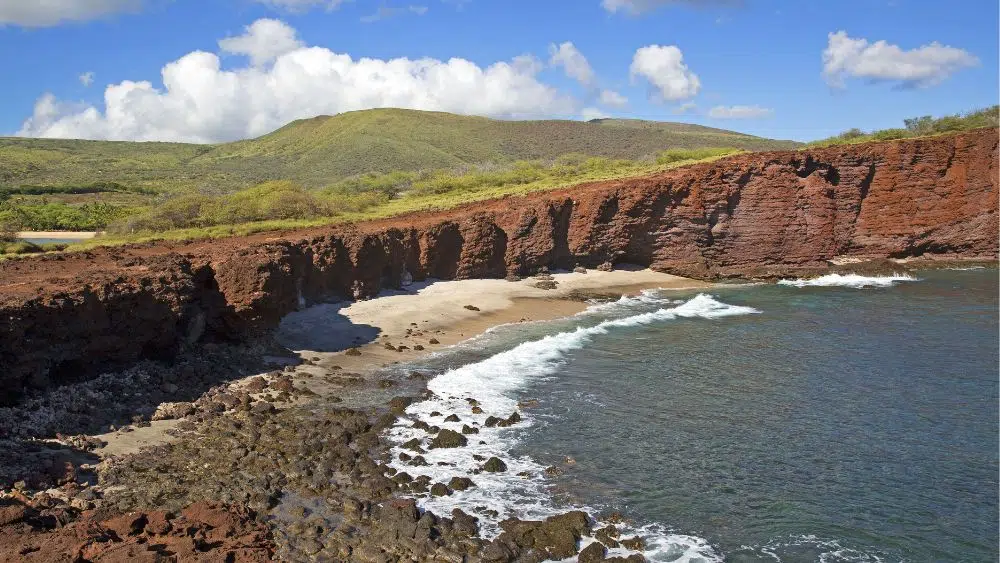
Housing cost to income ratio: 12.29%
Average childcare cost to income ratio: 0.91%
Violent crime index: 9.7
Nonviolent crime index: 29.1
Cost of living index: 141
If the other islands on this list feel too large and busy, Lanai may be the perfect choice for you. Lanai is a small, peaceful island of approximately 2,700 residents. Affectionately known as the “Pineapple Isle,” it is positioned off the western coast of Maui. Radiating a sense of seclusion while remaining accessible to Hawaii’s major attractions, Lanai is a short ferry ride from Maui, where the bustling town of Lahaina and the pristine beaches of Kaanapali await. Yet, Lanai itself is far from the shadows of its neighbors, boasting an identity rich with natural beauty and tranquility. The Lanai Culture & Heritage Center offers a deep dive into the island’s history, from its pineapple plantation days to its evolution into a luxury resort destination.
Home to over 89,000 acres of countryside and 18 miles of secluded beaches, Lanai is a place where you can feel connected to nature. One of the most popular sights is a desert terrain with rugged beauty called Keahiakawelo, or the Garden of the Gods. Lanai City has attractions such as a community garden, adventure park, and an art gallery. This little island is politically liberal. Education takes a front seat with intimate schooling options where teachers deeply invest in each student’s success. Healthcare needs are met with comprehensive services at the Lanai Community Hospital.
Lanai presents an unequaled opportunity to redefine work-life balance. Imagine trading in your daily commute for a teleconference with the backdrop of a panoramic ocean view or brainstorming sessions on hikes through the island’s rugged terrain. Lanai’s emerging tech and hospitality sectors, partly fueled by visionary investments, offer burgeoning career opportunities, making it fertile ground for professional growth amidst an idyllic setting. Lanai’s economy is predominantly anchored in tourism, with luxury resorts and hospitality leading as major employers. However, agriculture and sustainable initiatives are burgeoning sectors, reflecting the island’s evolving economic landscape.
Enjoy sunny weather on Lanai; residents can expect 272 sunny days and 28 inches of rain annually. Families will find Lanai to be a nurturing haven with its tight-knit community and emphasis on outdoor living. Weekends are for family adventures, exploring Shipwreck Beach’s mysterious past, diving in Hulopoe Bay, or hunting in the uplands. State parks like the Polihua Beach offer untouched beauty and tranquility, ideal for picnics, beach combing, and turtle watching. The island’s safety and communal atmosphere foster an environment where children can roam freely, and parents can find a supportive network.
Locals embrace the island’s natural bounty for entertainment and recreation. Community events, such as movie nights at the park or cultural festivals, knit the community closer, offering a taste of Lanai’s vibrant spirit. While Lanai may not boast mega malls, its charm lies in its local boutiques and artisan shops, offering everything from handcrafted jewelry to luxury fashion. Dining is an adventure here, with options ranging from upscale restaurants at the resorts to cozy cafes that serve local Hawaiian fare.
Lanai Island new home communities beckon as a haven for those seeking a blend of peaceful retreat and vibrant community life. Its unique blend of natural beauty, cultural richness, and community spirit makes it an enticing prospect for prospective homebuyers, whether they are young professionals, families, or retirees looking to write their next chapter in paradise. Check out neighborhoods like Mililani Mauka, Maunawili, and Kailua.
5. Kauai
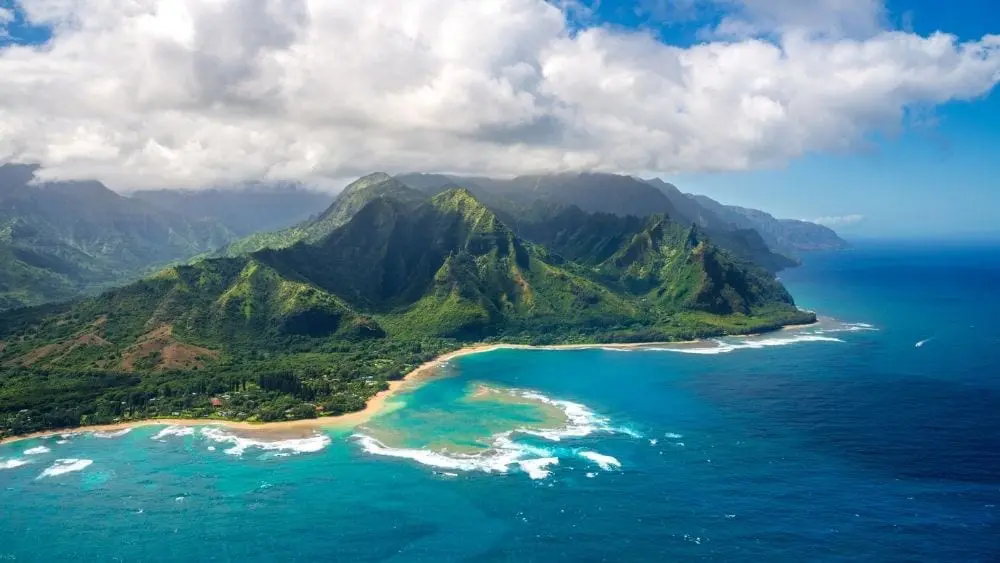
Housing cost to income ratio: 21.05%
Average childcare cost to income ratio: 0.82%
Violent crime index: 8.5
Nonviolent crime index: 24.9
Cost of living index: 157.5
Situated in the northwest of the Hawaiian island chain, Kauai is not directly near major cities but offers an escape into nature unlike any other. Despite its secluded feel, it remains accessible via Lihue Airport, connecting residents to Honolulu and the broader world. Major attractions include the Na Pali Coast, Waimea Canyon, and Hanalei Bay, each a testament to the island’s supreme beauty and outdoor adventure opportunities. The northernmost island in the chain, Kauai is called “The Garden Island” and it’s not hard to see why. The island is covered in lush rainforests, mesmerizing waterfalls, and spectacular mountain cliffs.
Go hiking along the Kuilau Ridge Trailhead, kayaking down the Wailua River, or immerse yourself in the villages scattered along the island. For an exciting journey, check out the dazzling Manawaiopuna Falls, a 400-foot waterfall visible only by helicopter. Take your furry friend to Kauai North Shore Dog Park, which includes access to a hiking trail.
Kauai is an inspiring environment that fosters a perfect work-life balance. The island’s burgeoning tech scene and remote work-friendly atmosphere are complemented by ample networking opportunities in eco-tourism, real estate, and local businesses. Major employers include the hospitality sector, health services, and local government. The island’s economy benefits from a growing interest in sustainable living and organic farming, supporting a burgeoning sector of small businesses focused on local and environmentally friendly products. Outdoor activities like surfing, hiking, and kayaking offer rejuvenating breaks from work. Locals on Kauai embrace the outdoors, with surfing, paddle boarding, and fishing being popular pastimes.
Community events, from farmers’ markets to music festivals, highlight local talents and produce. Shopping and dining options reflect the island’s diverse culture, with everything from traditional Hawaiian fare to international cuisine available. The island offers a variety of leisure activities such as golfing, gardening, and art classes, tailored to a relaxed lifestyle.
Like other Hawaii islands, Kauai’s political climate is strongly liberal. Kauai’s weather runs warm and wet, with 41 inches of rainfall and 240 sunny days expected per year. Kauai offers a range of educational institutions, ensuring residents have access to quality education from kindergarten through high school. While there are no large universities on the island, community colleges offer higher education opportunities and vocational training. The healthcare system is robust, with hospitals like Wilcox Medical Center providing comprehensive medical services.
Kauai’s museums and cultural attractions, like the Kauai Museum and Grove Farm Homestead, offer insights into the island’s geological and cultural history. Unique activities that draw people to Kauai include helicopter tours of the Na Pali Coast, boat trips along the Wailua River to the Fern Grotto, and hikes on the Kalalau Trail. The island’s parks, such as Koke’e State Park and Polihale State Park, boast some of the most scenic hiking trails and camping spots.
Kauai, the oldest and fourth largest of the Hawaiian Islands, offers a breathtaking paradise for potential new homebuyers. Popular suburbs include Hanalei, Hanapepe, and Kapa’a. Kauai embodies a lifestyle where community, nature, and well-being are intertwined. For prospective homebuyers, whether young professionals, families, or retirees, the island offers a diverse array of attractions and amenities that cater to a wide range of interests and needs, making it an idyllic place to call home.
6. Molokai Island
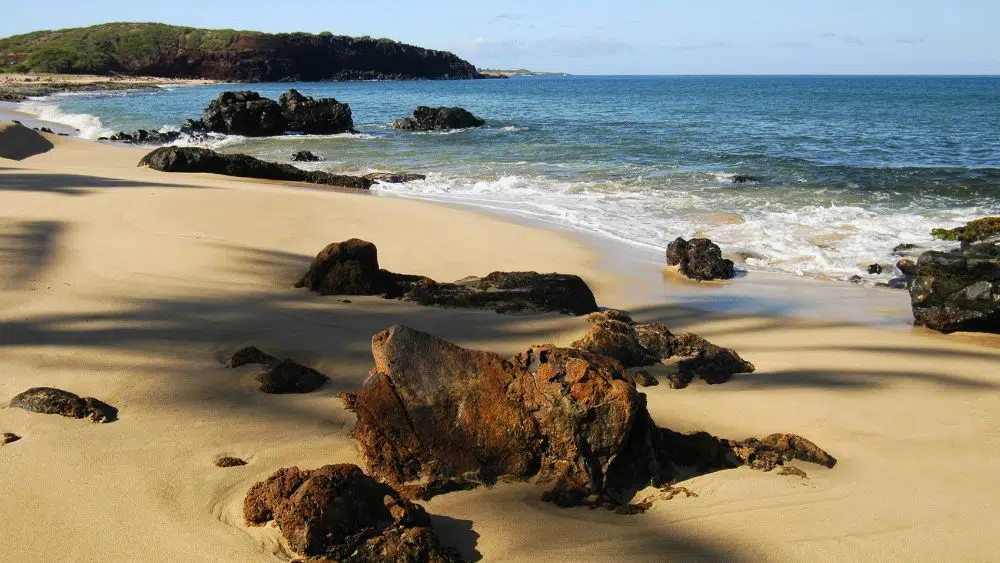
Housing cost to income ratio: 25.18%
Average childcare cost to income ratio: 2.64%
Violent crime index: n/a
Nonviolent crime index: n/a
Cost of living index: 116.5
Nestled within the Hawaiian archipelago, Molokai stands as a testament to the timeless allure of Hawaii’s untouched beauty. This island, situated to the southeast of Oahu and north of Lanai, serves as a bridge between Hawaii’s bustling future and its serene, storied past. Unlike its more famous neighbors, Molokai offers a retreat from the hustle and bustle of major cities and attractions, making it a haven for those seeking tranquility amidst natural splendors. Molokai Island is a tight-knit community of 7,400 residents. With a significant percentage of the population of Native Hawaiian ancestry, Molokai maintains a rich cultural heritage and historical preservation.
Molokai presents an unrivaled opportunity for those yearning to balance remote work with adventure. This island, with its pristine landscapes, offers a unique backdrop for innovation and creativity. Here, the digital nomad can find solace in the quiet, punctuated only by the sounds of nature, while still staying connected to the global marketplace. The major employers on Molokai tend to be in sectors like education, healthcare, and sustainable agriculture, reflecting the island’s commitment to its community and environment. While not a hub for traditional business sectors, Molokai offers a new definition of success, measured in the quality of life and the health of the land.
Molokai does not boast the usual lineup of tourist attractions; instead, it invites visitors and residents to immerse themselves in its natural beauty and culture. The Kalaupapa National Historical Park offers a poignant look at Hawaii’s history, while the Molokai Museum and Cultural Center showcases the island’s traditions and art. Unique to Molokai are its outdoor activities—kayaking the serene waters, hiking through lush rainforests, and participating in traditional Hawaiian practices that connect people to the land. The island’s parks, such as Pala’au State Park, provide breathtaking vistas and access to ancient Hawaiian sites. Locals often spend their time engaging in outdoor pursuits like fishing, hunting, and hiking, embracing the natural resources that make Molokai special. Entertainment is found in the community itself, with local music, dance, and festivals.
Spend 281 sunny days each year exploring the beaches, taking a mule down to Kalaupapa Peninsula, or hiking along the majestic mountains. Molokai receives approximately 25 inches of rain per year; on rainy days, head indoors to learn more about local culture at the Molokai Museum & Cultural Center or see the latest gallery at the Molokai Arts Center.
Shopping on Molokai leans towards the essentials, with local artisans and farmers’ markets offering a taste of the island’s bounty. Dining is an intimate affair, with family-run restaurants serving dishes made from locally sourced ingredients. Festivals and events, such as the Molokai Ka Hula Piko, celebrate the island’s rich cultural history and its connection to the dance’s origins.
While Molokai’s educational offerings may be more limited compared to larger cities, the community-centric approach to learning fosters a deep appreciation for the island’s culture and environment. Education here goes beyond the classroom, with the island’s rich history and culture serving as an open-air classroom for children and adults alike. The island’s pace allows families to reconnect, spending their days exploring untouched beaches, participating in local traditions, and volunteering with conservation efforts. It is a place where children learn the value of community and the environment firsthand. Healthcare is provided by Molokai General Hospital, ensuring that residents have access to quality medical care.
Molokai is not just a place to live; it is a way of life. For those looking to call this island home, it promises a return to what is essential—community, nature, and harmony. Popular suburbs include Kula, Makawoa, and Wailuku. In the embrace of Molokai, every day is an opportunity to live fully, with the spirit of aloha guiding the way.
This list was compiled using statistics for cost of living, average housing costs, average childcare costs, and crime indices.

Sarah graduated from Trinity University in 2012 with a degree in International Relations and Political Science. She writes blogs on new homes, decor, communities, and more for NewHomeSource. When she’s not writing, you can find her spending time with her three cats.
 How to Build a House in Indiana
How to Build a House in Indiana